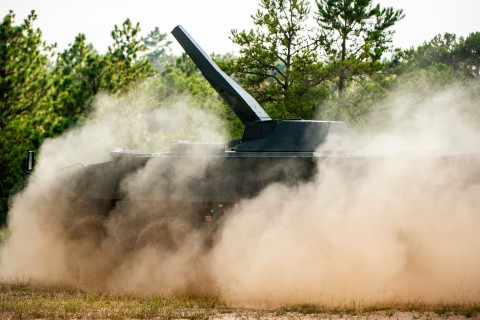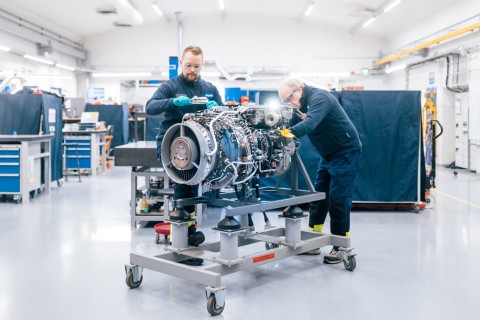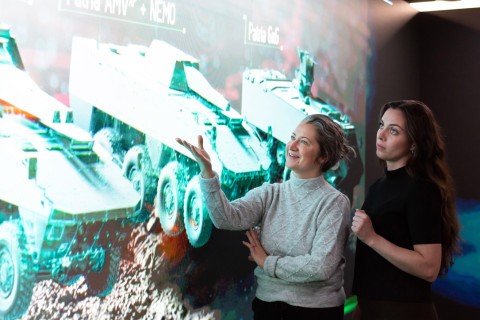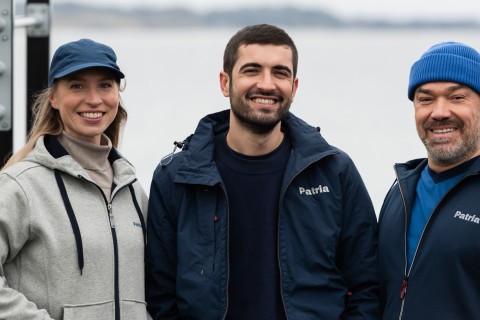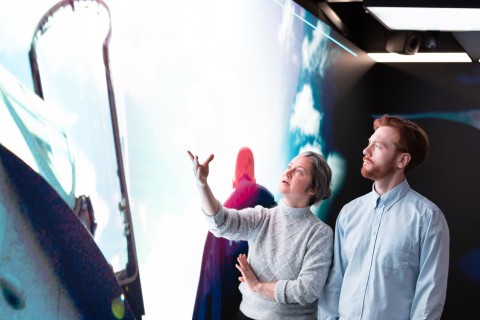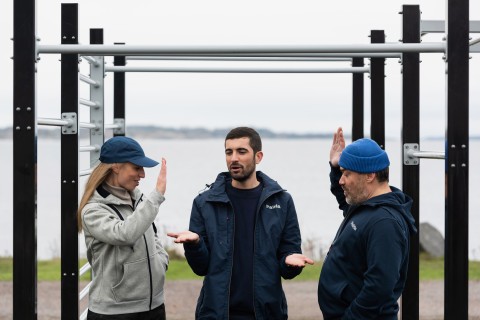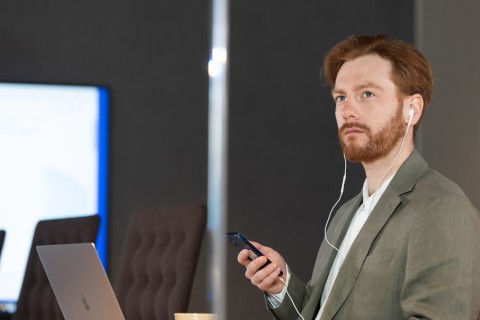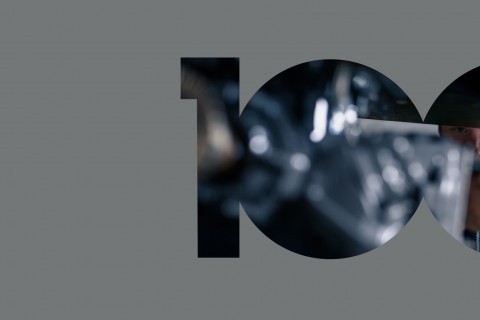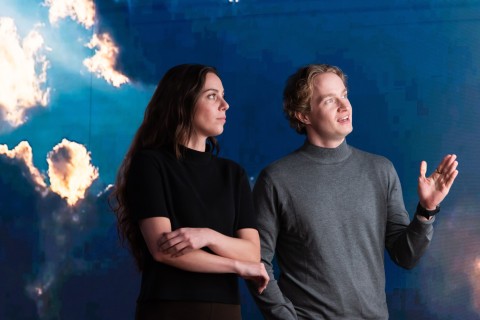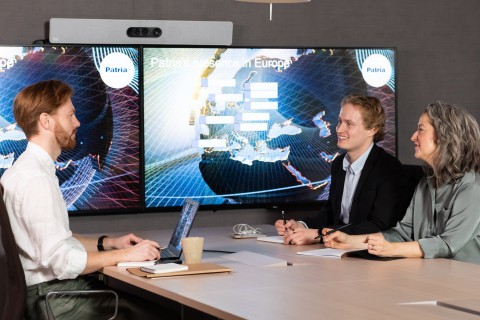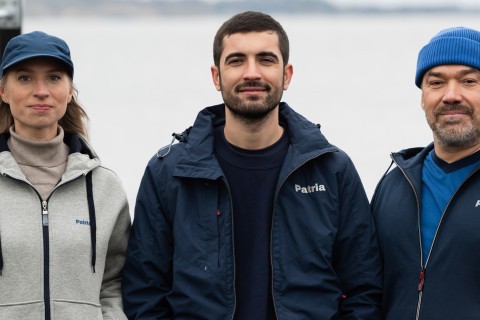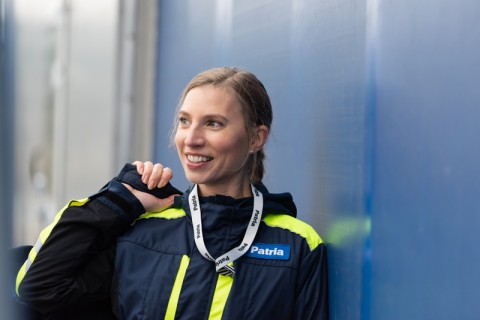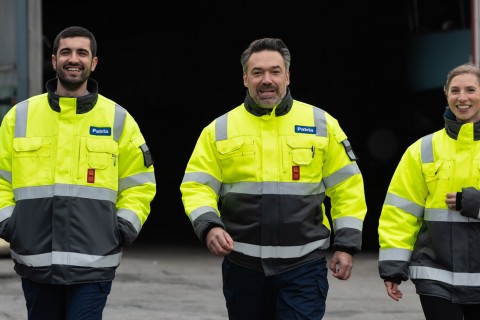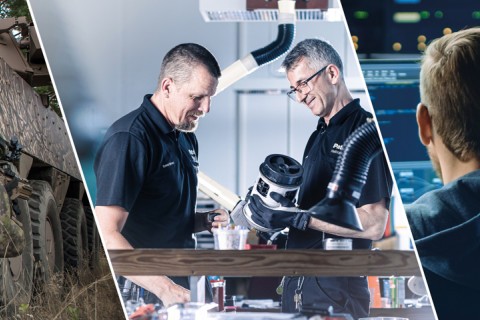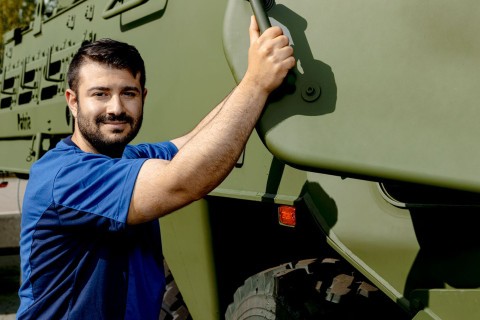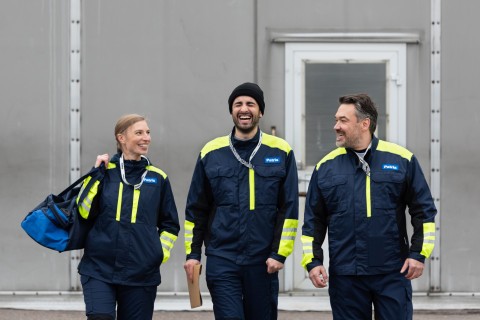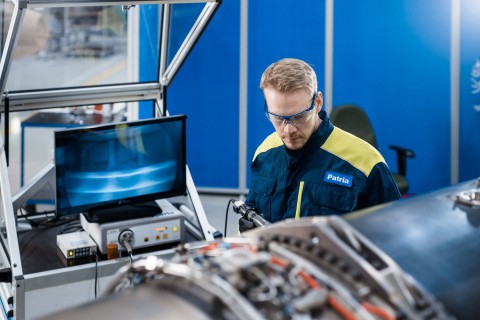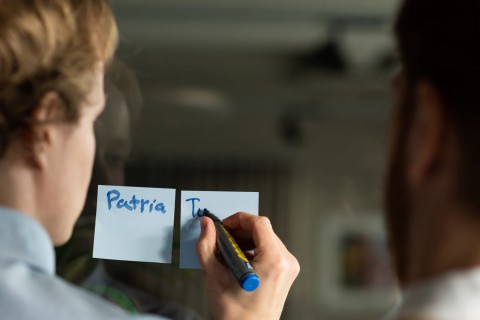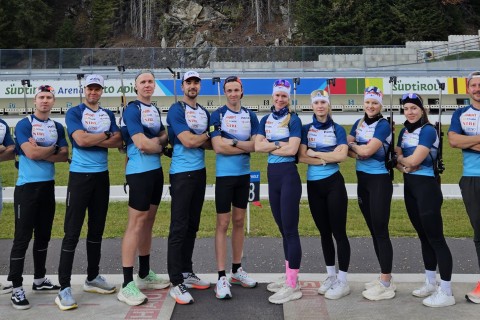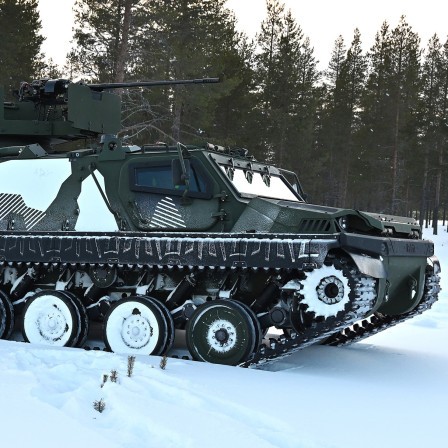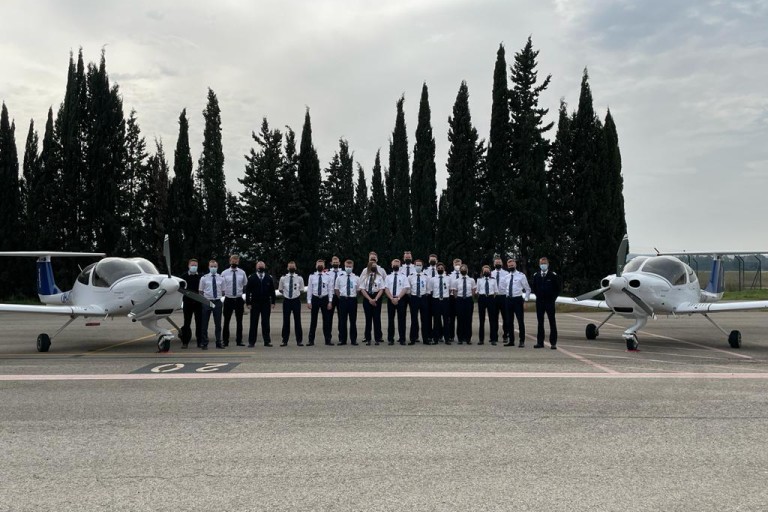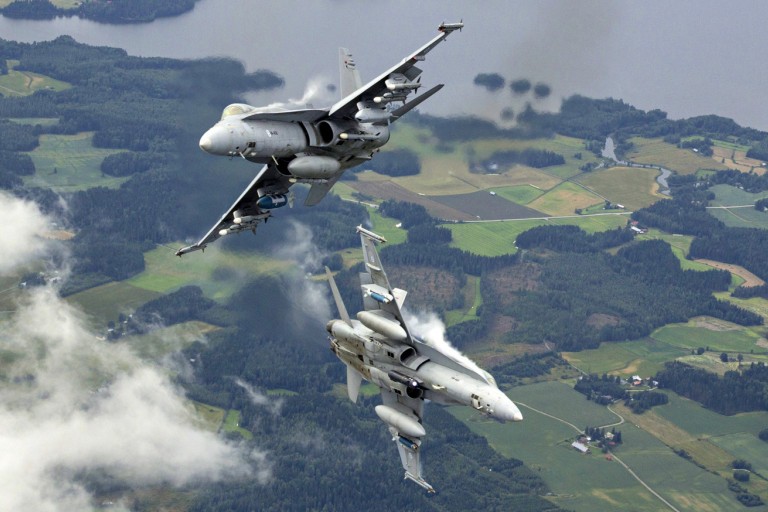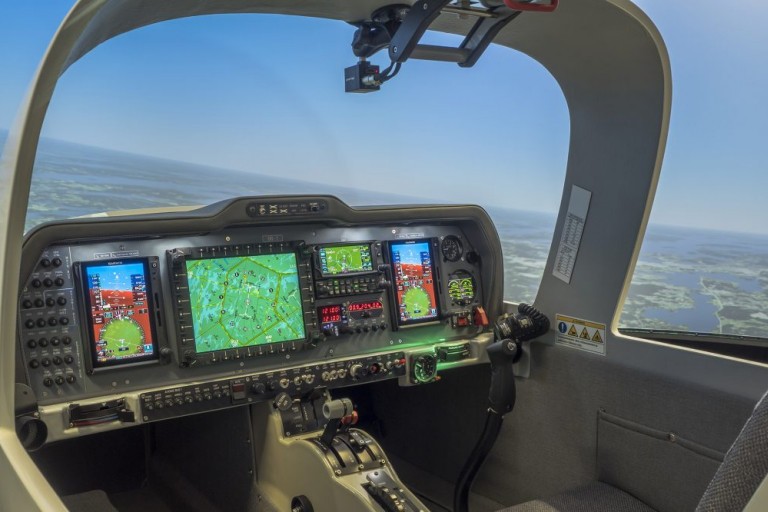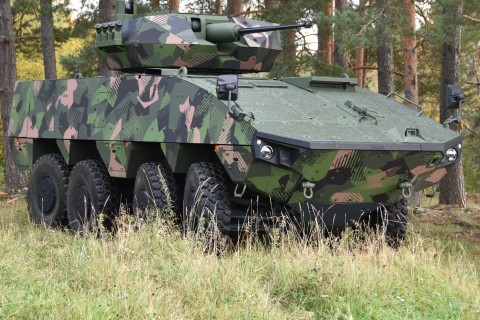
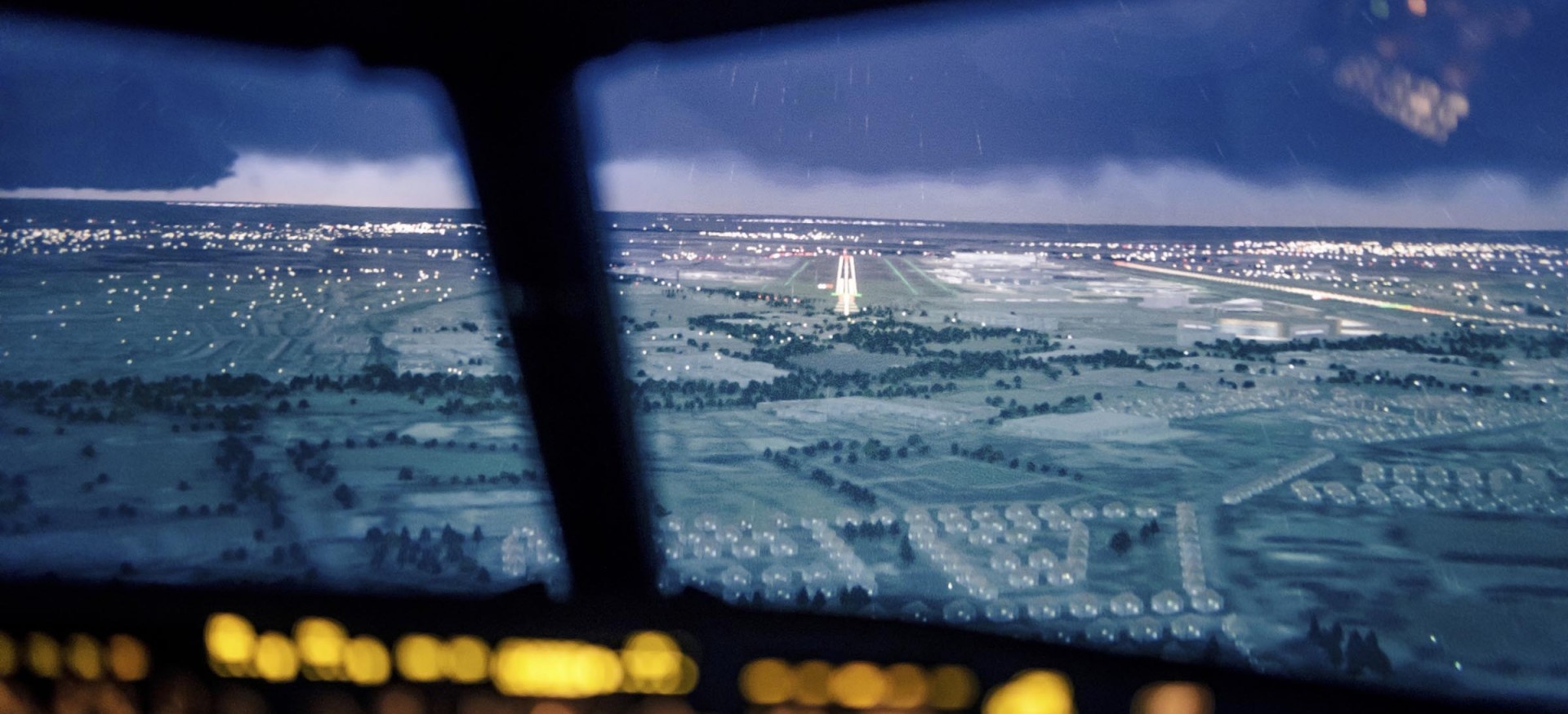
The thrill of your first flight
16.6.2017
Patria’s brand-new Airbus A320 Fixed Base simulator will be used to train new Airbus pilots in Patria´s Multi-Crew Pilot License training programme. In addition, the device can be used to parts of the Airbus A320 type rating training.
The landing gear touch the runway softly as the Airbus 320 lands at Zürich-Kloten Airport on a sunny day. I have just completed my first flight at the helm of the 70-tonne aircraft. “You did great, better than I did on my first flight”, says Finnair’s Airbus co-pilot course trainee Timo Pöntinen from the bench next to me. During the two-hour flight, we have seen the sights of London, marvelled at the Alps, identified several close-flying planes and weathered a thunderstorm. The mind-blowing experience in Patria’s Airbus 320 simulator has given an ordinary man a taste of the everyday life of commercial airline pilots.
Finnair's Airbus co-pilot course trainee Timo Pöntinen
Multi-Crew Pilot License (MPL) offers precision training
Next to Pöntinen, Managing Director Mikko Paronen of Patria Pilot Training is introducing us to the functions of the simulator and talking us through our test flight. While we flew, he talked to us about the Multi Crew Pilot License training programme. But first, let’s ask how Pöntinen ended up in the cockpit of an Airbus. “I graduated from the Finnish Aviation Academy as a commercial pilot in 2013. In the first phase of the training, I obtained my private pilot’s licence here at Patria. I took a flight instructor course in Poland and got a job as a flight instructor at Patria. I have trained a number of students since then, including student pilots from Kazakhstan. Last summer, I realised a long-term goal by applying for Finnair’s Airbus training. One month ago, I passed the Airbus Entry Level Training on this very dame simulator, as the third student in the history of the device. I will start as a co-pilot in May or June 2017”, says Pöntinen, outlining his career path.
Patria’s Multi Crew Pilot License (MPL) training programme is a concise and cost-effective, specialised training course for Airbus co-pilots. The students are given basic flight training and type rating training for Airbus A320 aircraft in eighteen months. Finnair’s first MPL group started training at Patria in November 2016. Pilots who pass the training are authorised to act as co-pilots on Finnair’s Airbus 320 fleet.
Managing Director Mikko Paronen of Patria Pilot Training
System exercises and cooperation in the cockpit
On Patria’s simulator, MPL students receive instrument flight rules training and are introduced to the operating principles and use of the Airbus’ systems. After this, the cadets attend training organised by Finnair, where they complete their Airbus training on a full flight simulator. One of the key goals of MPL training is to teach new co-pilots efficient Cockpit Resource Management.
“Flying always requires close crew cooperation. In the MPL training, students are taught to function as part of the crew of an Airbus”, says Mikko Paronen. The Airbus A320 is an extensively automated aircraft equipped with a multitude of systems. Being in control of these systems in all situations is the most important task of a pilot. “Flying an Airbus is actually more about management of the flight situation than actually operating the controls”, Pöntinen continues.
The extensive use of simulators in pilot training makes it possible to provide economic and safe training for both normal and exceptional situations. On a simulator, you can provide training for situations which, for reasons of safety, you would not want to or could not replicate in a real aircraft, such as serious or multiple system failures and various types of engine malfunctions. The students are not faced with these situations unexpectedly in training. The contents of the training are discussed before each lesson. “The purpose is to make the student learn something, not make mistakes. The exceptional circumstances are discussed in detail before the exercise. This ensures that the student is prepared and will make the right choices when the time comes in the simulation”, Paronen says.
Simulation in a real cockpit
From the outside, the simulator looks like a white container bulging at one end. All the fine points are on the inside. The instructor’s seat is located at the back of the simulator, at the Instructor Operating Station. Before the exercise, the instructor specifies parameters such as the airport and gate from which the exercise will begin, the weather and the flight plan. The simulator contains ten detailed airports chosen by the customer. Among the choices made by Patria are London Heathrow, Paris Charles De Gaulle, Stockholm-Arlanda and Helsinki-Vantaa Airport. Generating the image of the airport onto the screen in front of the simulator’s cockpit takes roughly one minute. The view is in true 3D, with details such as various vehicles moving about on the airport apron area and nearby highways. The visualisation is projected with three projectors onto a parabolic surface made from Mylar. The image is then reflected onto the screen with mirrors. Two students and the instructor are inside the simulator during each training session. In the simulator, the students sit in a real aircraft cockpit, with the instructor’s station located behind the students. The cockpit in Patria’s simulator served British Airways for over twenty years before being cut off from a decommissioned Airbus A320, previously registrated as G-BUSK.
From the outside, the simulator looks like a white container bulging at one end. All the fine points are on the inside.
“The simulator hardware was built into the cockpit with new simulation components. The cockpit still contains original details, such as the panels and thrust levers”, Paronen says. The controls, levers, buttons and meters in the cockpit match those of a real Airbus exactly. All cockpit sounds are also completely realistic.
The biggest difference between Patria’s simulator and so-called full flight simulators is that it does not simulate the effect of g-forces on steering or turbulence. The second major difference is the price: an Airbus A320 full flight simulator costs nearly 10 million euros, while a Fixed Base simulator like Patria’s comes considerably cheaper. Both simulator types provide an amazingly authentic flight experience, however.
How the simulator works
The simulator consists of four main parts: an authentic cockpit, the Instructor’s Operating Station behind the cockpit, the visual system in front of the cockpit and the computer system that controls the functions of the simulator.
Seven Dell computers in a hardware rack form the brains of the simulator. They make sure that the airport, weather conditions and other factors specified by the instructor are drawn realistically before the pilot eyes in the cockpit. Three of the computers control the video projectors that generate the image, one computer per projector. The fourth computer is the host device for the three video channels, converting each flight situation into one matching video picture in real time. The four remaining computers simulate the functions of the aircraft’s other systems, making sure that each flight situation is as realistic as possible.
Patria’s simulator includes ten detailed airports, and almost every major airport in the world can be ordered from the manufacturer. The manufacturer performs simulator software updates and fixes possible bugs via a remote connection.
The simulator was manufactured by Multi Pilot Simulations b.v (MPS) in the Netherlands. US-based RSI supplies the simulator’s visual technology to MPS. The Finnish Transport Safety Agency Trafi approved the simulator for pilot training in Finland in late December 2016. The official certification level of the device is A320 FNPT II/FTD1 MCC (Flight Navigation and Procedure Trainer/Flight Training Device level 1, Multi Crew Coordination).
What did you like about the article?
Thank you for your opinion! You can share the article on social media using the buttons below:
